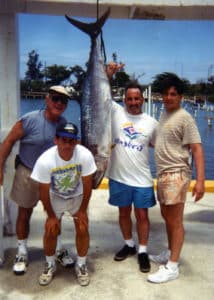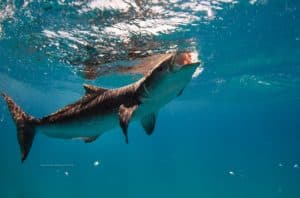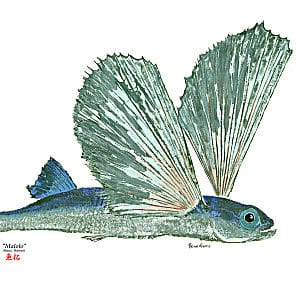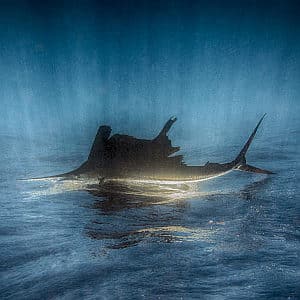When most anglers think “world records,” species like marlin or tuna are likely to come to mind — morwongs, monkfish and bluespine unicornfish probably wouldn’t. But as photos of 20 International Game Fish Association all-tackle world records in this gallery show, weird fish will have their day, also.
After you’ve seen the cool fish here and learrned a bit about ’em, be sure to check out Sport Fishing‘s first weird-world-records gallery with 22 more — you don’t want to miss the birdbeak dogfish or Darwin’s slime head!
(A note of special thanks to the IGFA’s curator of world records, Jack Vitek, for his invaluable assistance rounding up most of these images.)
Advertisement
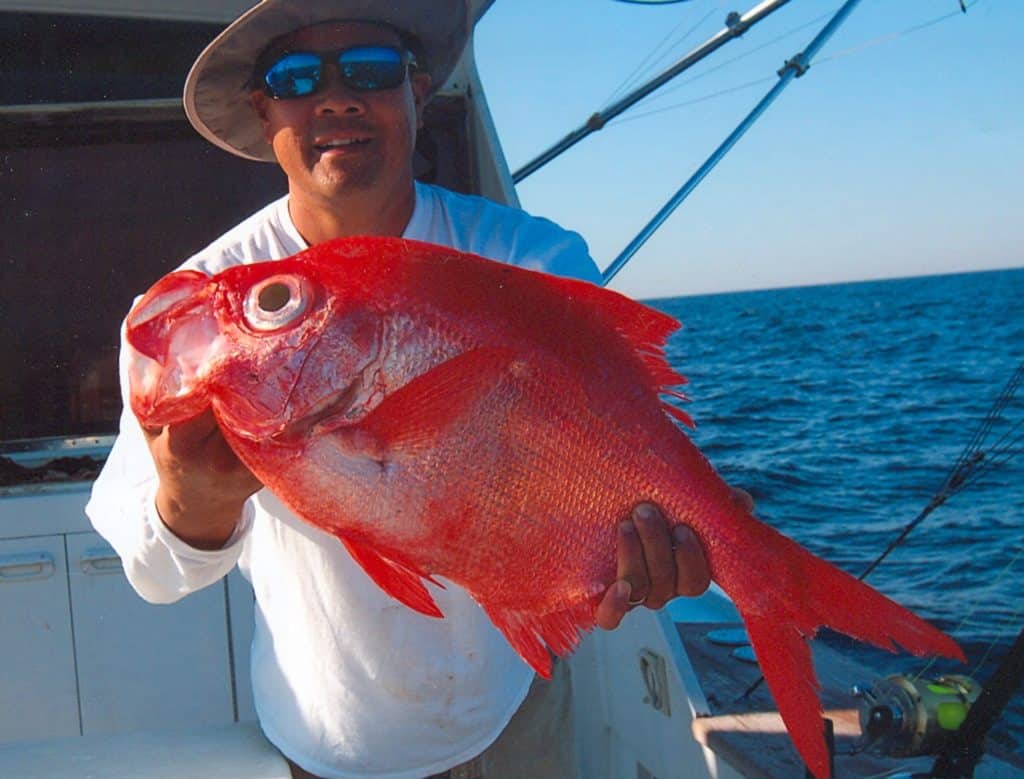
ALFONSINO (Beryx decadactylus)
Location: Norfolk Canyon off Virginia
Date: October 2010
Bait/lure: squid
Angler: Kevin Wong
About the species: This alfonsino exhibits classic characteristics of the family Berycidae — the solid, brilliant red color and large eyes. They inhabit deepwaters, where being red makes adaptive sense, since that is first color filtered out in deep water, appearing black. Alfonsinos are found in most of the world’s tropical and temperate waters and widely sold commercially. Courtesy of the International Game Fish Association
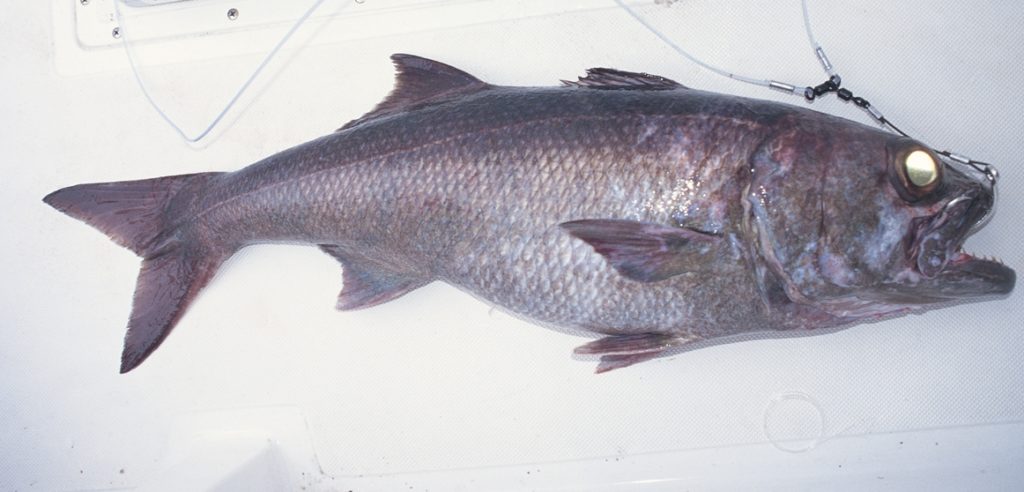
ATLANTIC SCOMBROPS (Scombrops oculatus)
Location: Bimini, Bahamas
Date: July 1997
Bait/lure: cut barracuda
Angler: Doug Olander
About the species: (see next page) Doug Olander / Courtesy of the International Game Fish Association
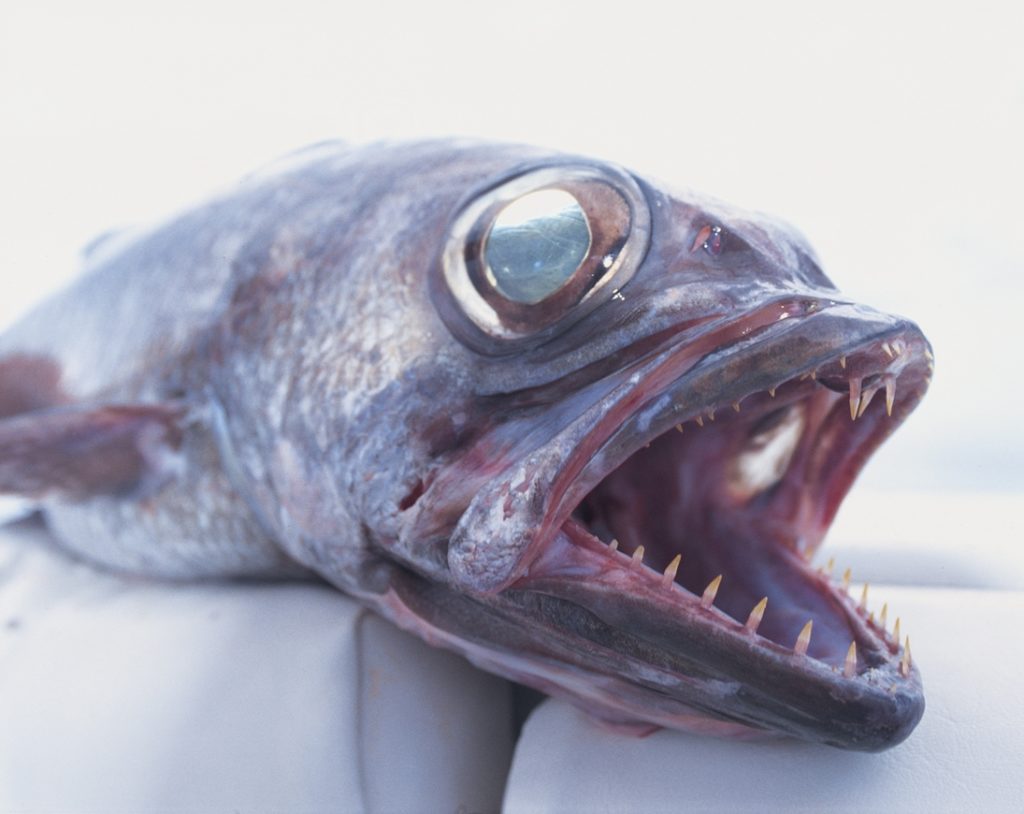
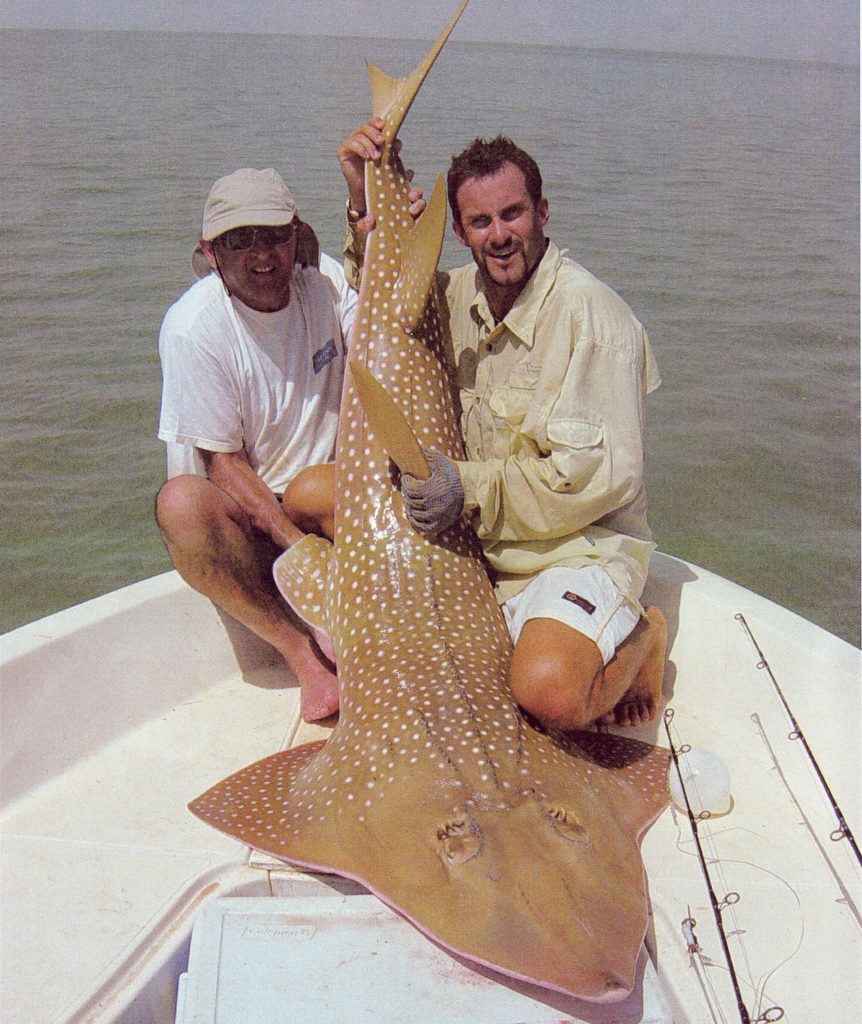
AFRICAN WEDGEFISH (Rhynchobatus luebberti)
Location: Guinea-Bissau, Africa
Date: March 2006
Bait/lure: shad
Angler: Michel Rumin
About the Species: While the African wedgefish looks like a strange shark, in fact the family (Rhynchobatidae) is part of the order Rajiformes — rays. The species inhabits the shallows of coastal central Africa. It’s considered a threatened species by the International Union for Conservation of Nature. Courtesy ot the International Game Fish Association
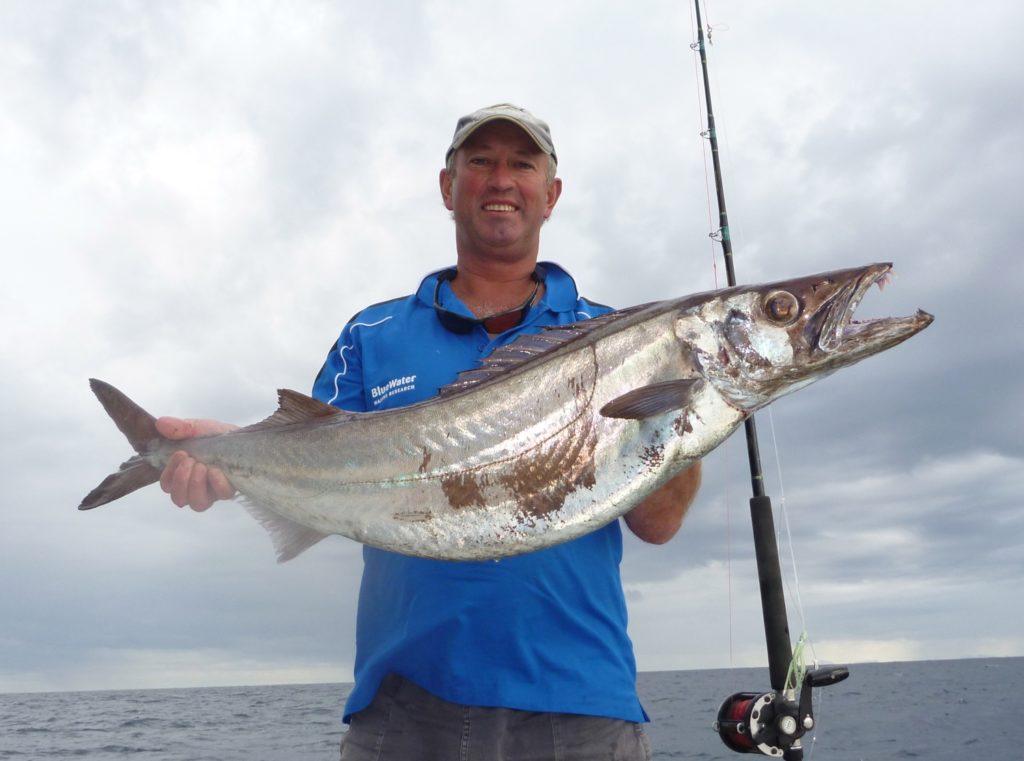
SILVER GEMFISH (Rexea solandri)
Location: New Zealand
Date: February 2012
Bait/lure: skipjack tuna
Angler: Scott Tindale
About the Species: A member of the family of snake mackerels (Gempylidae), as is the common cutlassfish (a.k.a. ribbonfish), the gemfish is a popular target (and food fish) for anglers fishing deep off northern New Zealand. Gemfish are often caught from nearly 1,000 feet or more. The species is limited in range, caught here and off southern Australia. Courtesy of the International Game Fish Association
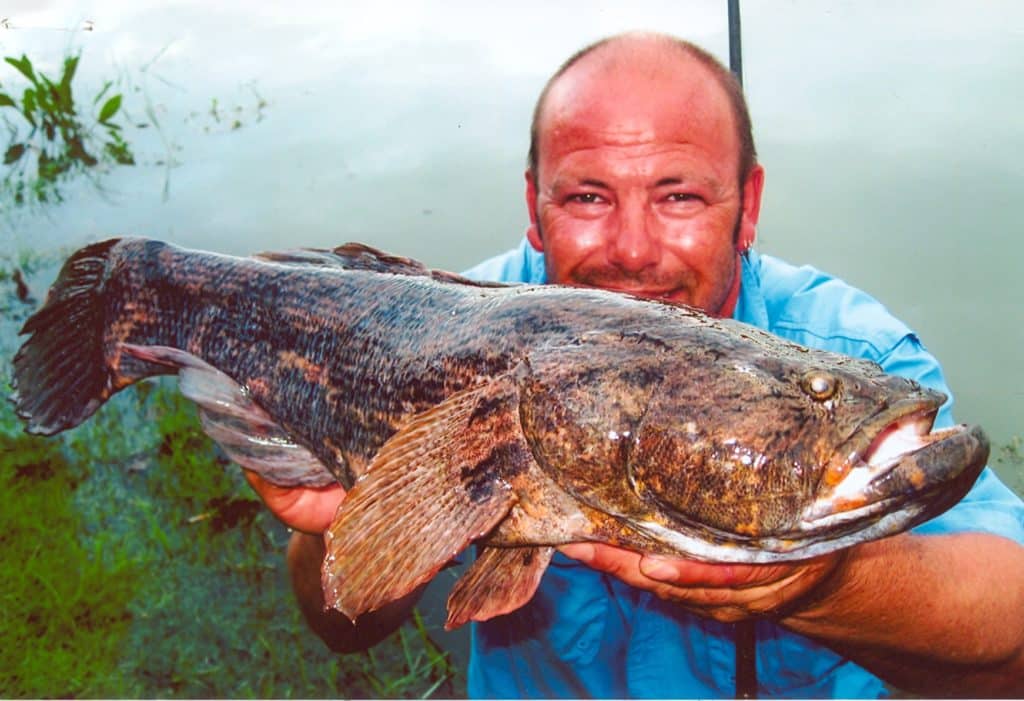
MARBLED GOBY (Oxyeleotris marmorata)
Location: Thailand
Date: October 2012
Bait/lure: dead bait
Angler: John Merritt
About the Species: Native to parts of Asia and likely the largest of gobies, this species is sold in the aquarium trade but is also caught as a food fish and widely considered a delicacy. The marbled goby inhabits brackish waters and also enters flooded forests and rivers. Courtesy of the International Game Fish Association
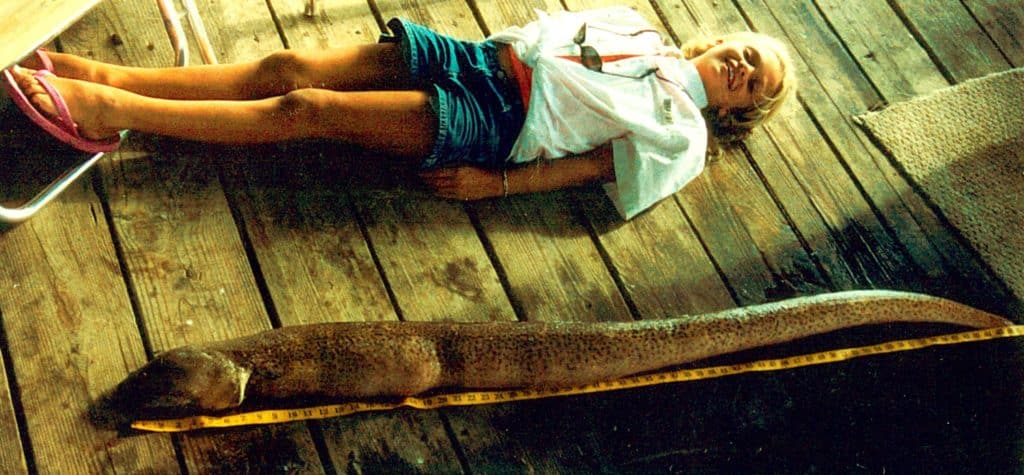
STIPPLED SPOON-NOSE EEL (Echiophis punctifer)
Location: Port Mansfield, Texas
Date: August 2004
Bait/lure: mullet
Angler: Taylor Ashley Walker
About the species: A member of the snake eel family, the stippled spoon-nose is found in the tropical Western Atlantic (and known as a snapper eel in Texas). It may inhabit shallow bays and lagoons, burrowing in soft bottoms and at times around jetties, but is also found offshore in deeper water. Courtesy of the International Game Fish Association
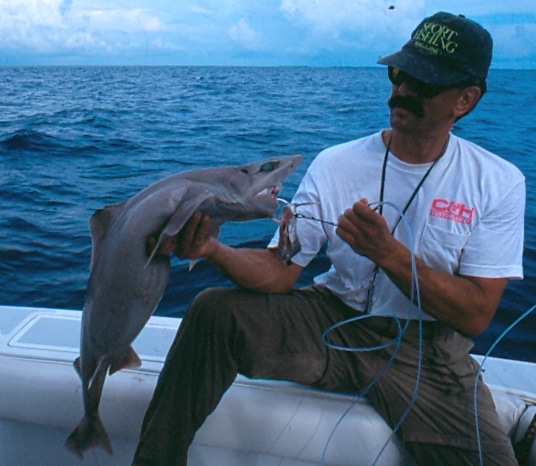
GULPER SHARK (Centrophorus uyato)
Location: Bimini, Bahamas
Date: July 1997
Bait/lure: cut mackerel
Angler: Doug Olander
About the species: (see next page) Doug Olander / Courtesy of the International Game Fish Association
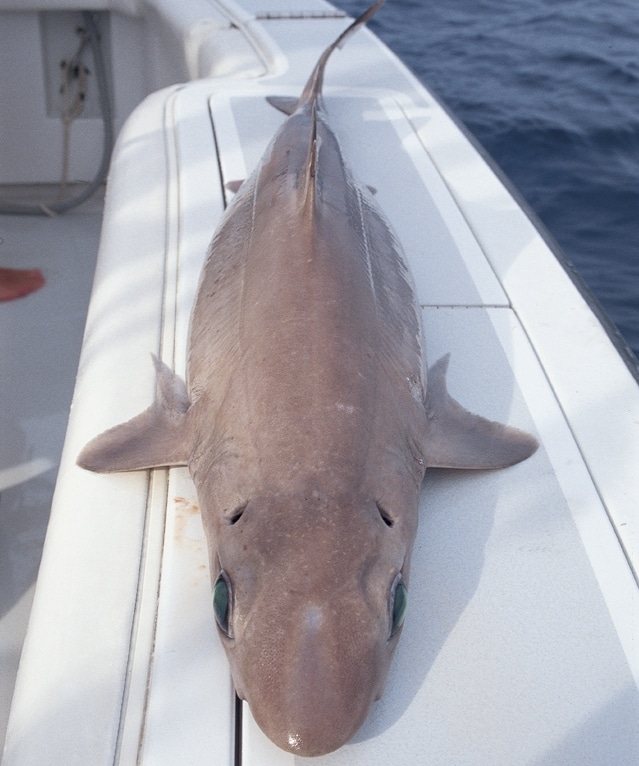
GULPER SHARK (Centrophorus uyato)
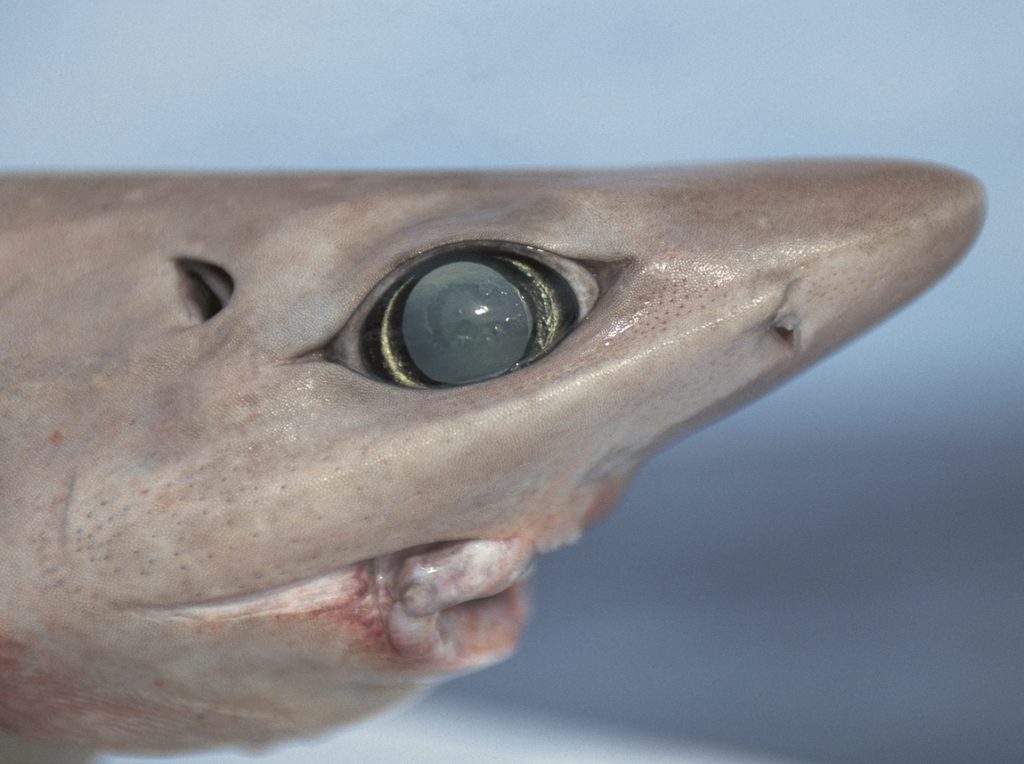
GULPER SHARK (Centrophorus uyato)
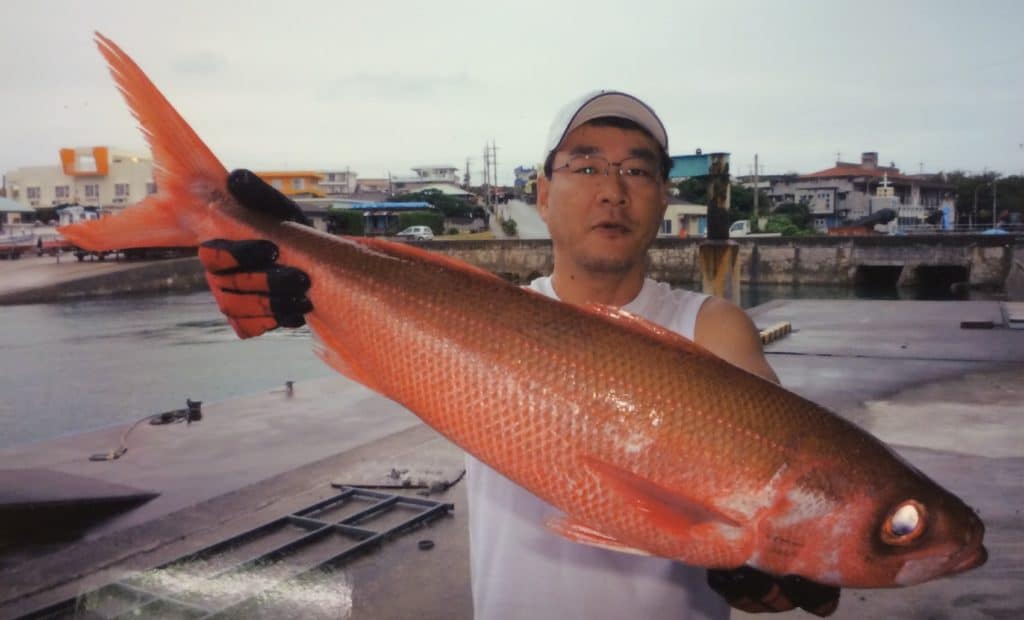
JAPANESE RUBYFISH (Erythrocles schlegelii)
Location: Yonaguni Island, Japan
Date: November 2010
Bait/lure: cut squid
Angler: Takashi Odagiri
About the species: The elegant Japanese rubyfish is one of the family of rovers. Its found in the western IndoPacific, caught off Japan, Korea and eastern Africa. The rubyfish prefers depths of 600 to over 1,000 feet where it feeds mainly on shrimp and small fishes. Courtesy of the International Game Fish Association
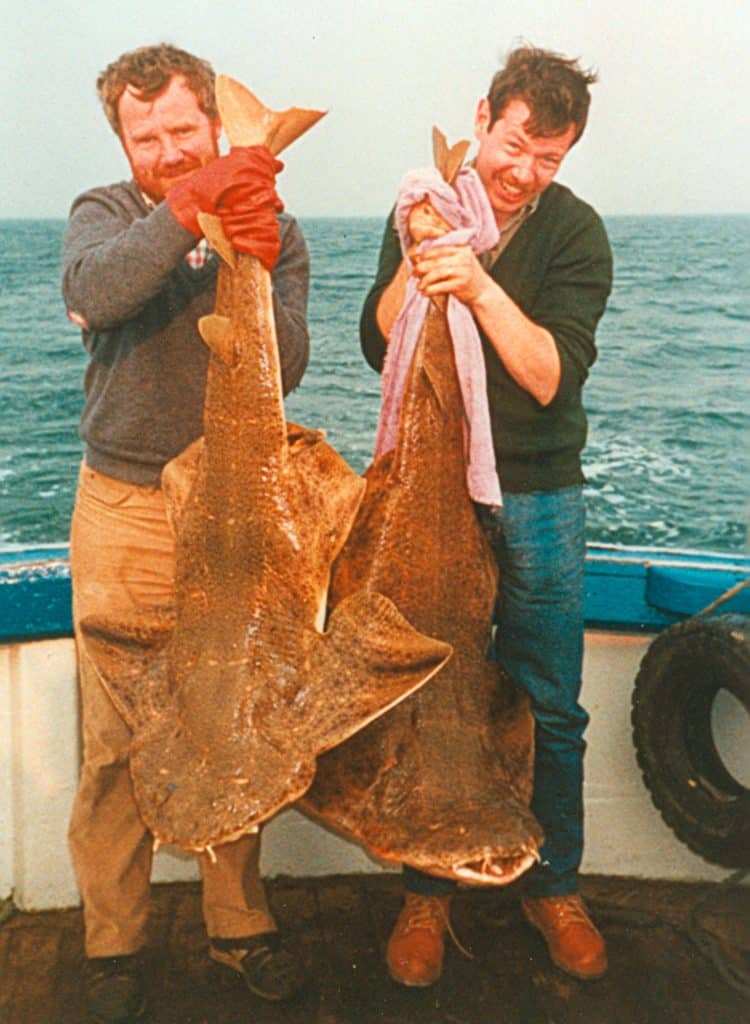
EUROPEAN MONKFISH (Squatina squatina)
Location: Tralee Bay, Ireland
Date: May 1989
Bait/lure: mackerel strip
Angler: Jim Dooley
About the species: Widely known as angel shark, this species is common to the cool waters of the northeast Atlantic. Monkfish spend much of their time lying buried in mud or sand with only their eyes protruding. They’re able to detect weak electric fields generated by prey. Though generally harmless, they can be quick to bite if provoked. Courtesy of the International Game Fish Association
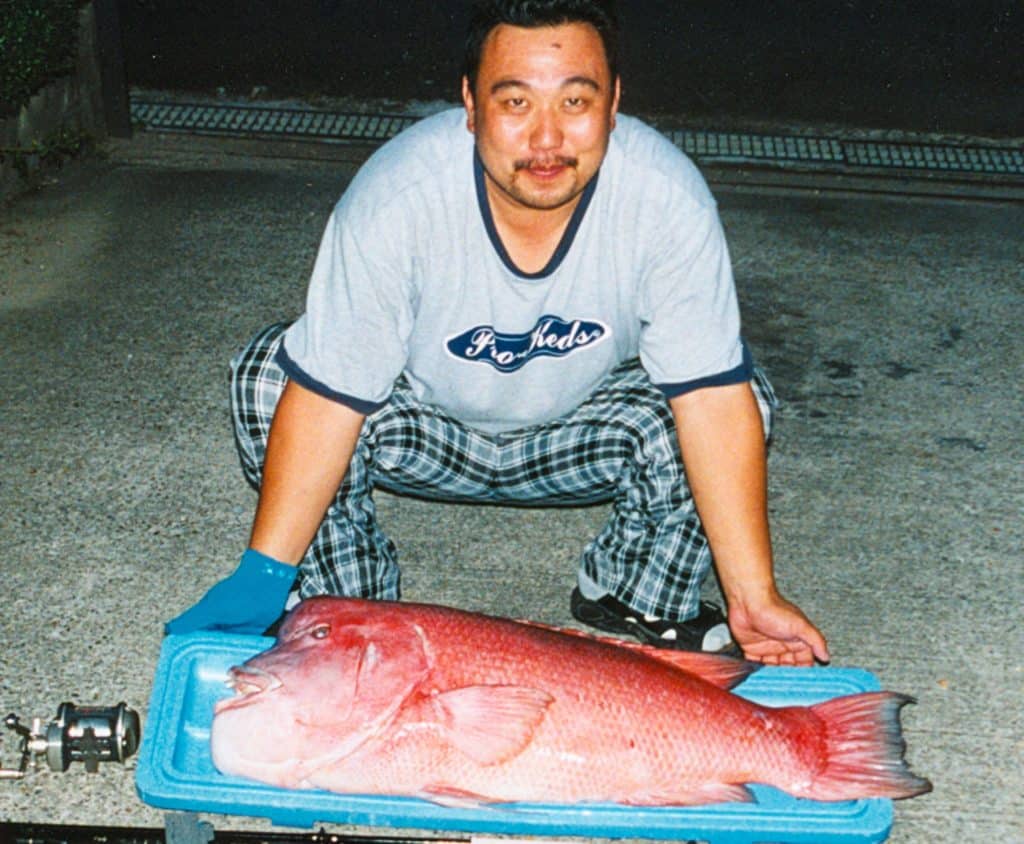
KOBUDAI (Semicossyphus reticulatus)
Location: Shiroura, Japan
Date: July 1999
Bait/lure: crab
Angler: Shunzo Takada
About the species: The kobudai, also known as the Asian sheepshead, is found only along the coast of southern Japan, south Korea and the South China Sea. It is one of the largest wrasses (family Labridae) and those familiar with the California Sheephead will note the similarity between these species. Both species feed on molluscs, crustaceans and sea urchins. Courtesy of the International Game Fish Association
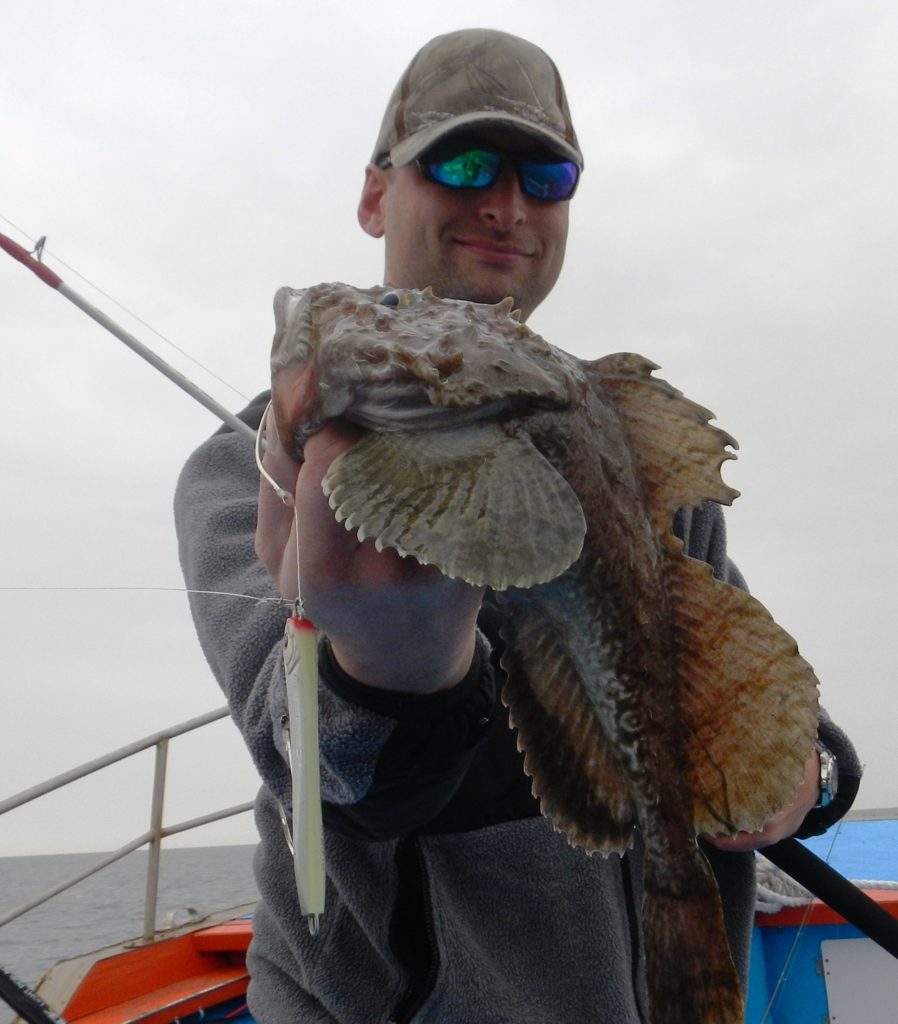
SPINYHEAD SCULPIN (Dasycottus setiger)
Location: Uljin, South Korea
Date: February 2014
Bait/lure: jig
Angler: Phillip W. Richmond, Jr.
About the species: Hundreds of species of sculpins are found worldwide, particularly in temperate and cold-water habitats. The spinyhead is found in the cold northern Pacific from Japan to Alaska and a bit south. They’re typically aggressive and easily hooked. Most sculpins are tasty. Courtesy of the International Game Fish Association
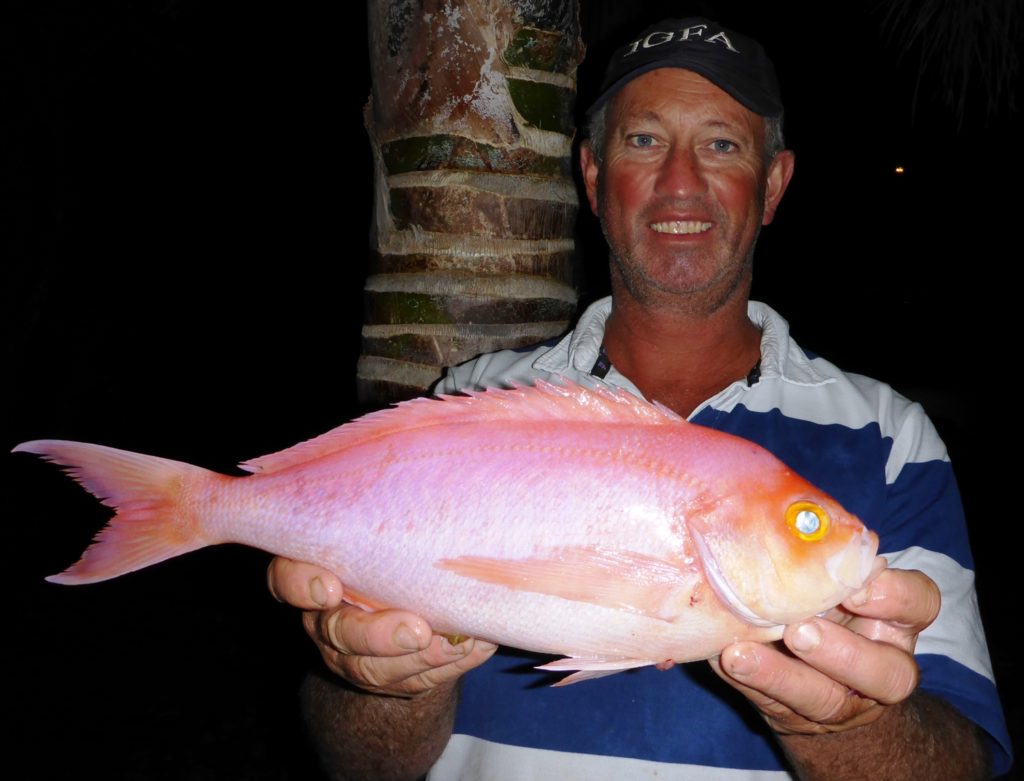
Location: Northern New Zealand
Date: April 2015
Bait/lure: cut skipjack tuna
Angler: Scott Tindale (this ties an earlier record for the species set by Sue Tindale)
About the species: Though this brilliantly colored fish of shallow to moderately deep reefs may not look like a grouper, maomaos are in fact a member of that family. Pink maomao live in subtropical IndoPacific waters. A similarly striking blue maomao is described in the first weird world records gallery. Courtesy of the International Game Fish Association
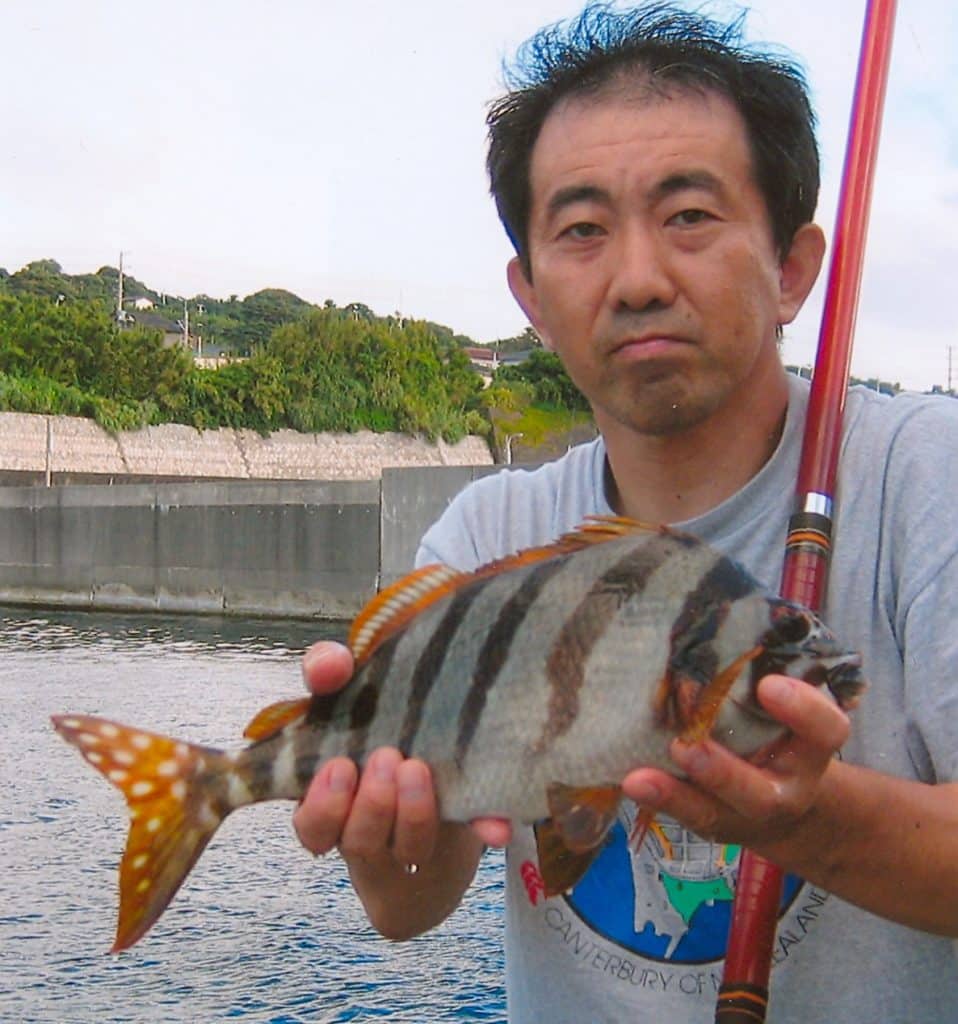
SPOTTEDTAIL MORWONG (Goniistius zonatus)
Location: Oshima, Japan
Date: August 2007
Bait/lure: krill
Angler: Takashi Nishino
About the species: Neither snapper nor grouper, morwongs are in their own family. This species is found in the western Pacific along the coasts of Japan and China. It is raised commercially in Japan.
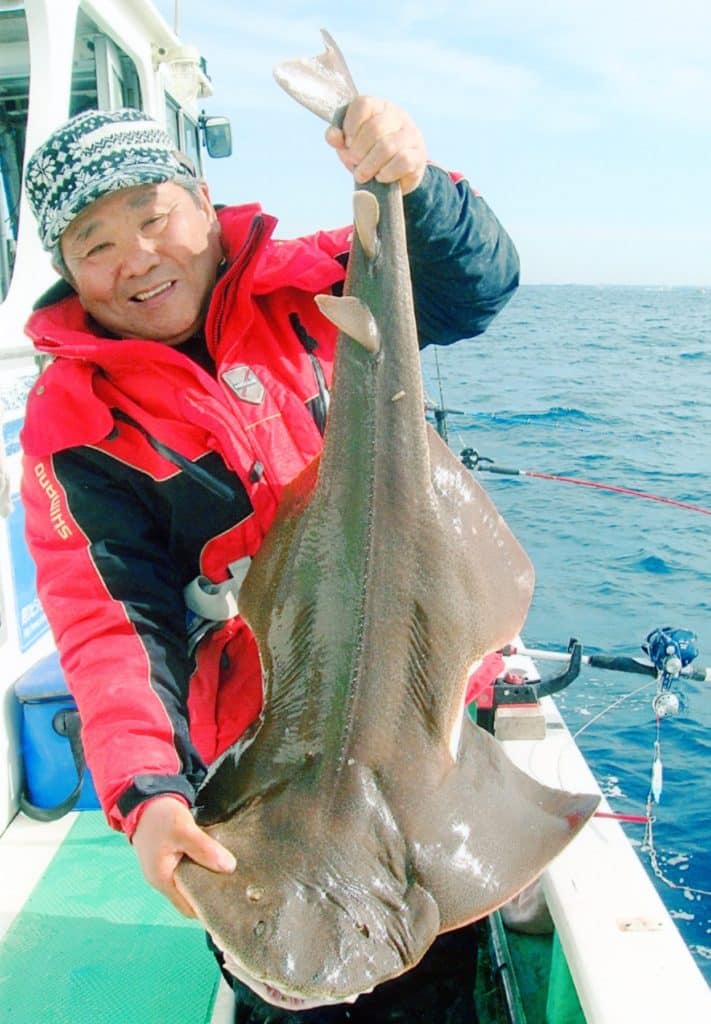
JAPANESE ANGELSHARK (Squatina japonica)
Location: Hiratsuka, Japan
Date: February 2013
Bait/lure: cut mackerel
Angler: Yusaku Nagai
About the species: Similar to the European monkfish (see image 12), this species of angel shark also pends its time on or buried just under soft sand. It supports a commercial fishery for its meat as well as its skin for leather. It lives along the coasts of Japan, Korea and northern China. Courtesy of the International Game Fish Association

